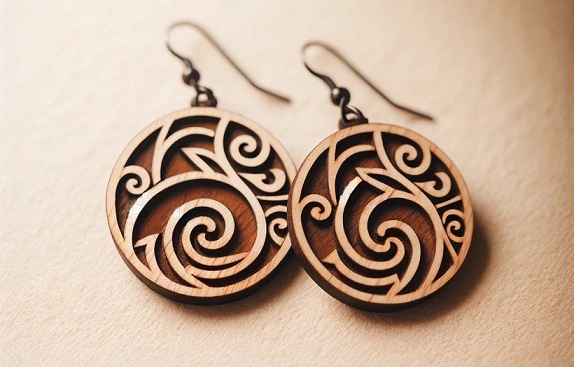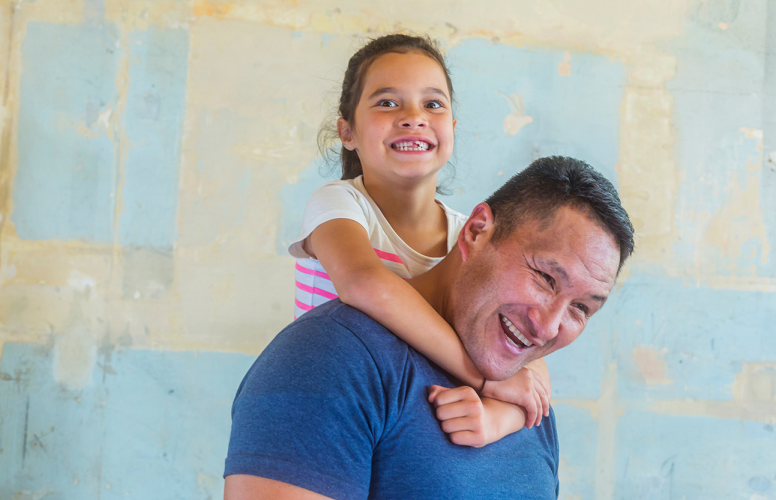Mā te rongo, ka mōhio. From listening, comes knowledge. - Part two
By Simon Green on February 19, 2024 in Cultural capability
This is the second of three blogs that explores the extent to which our ākonga Māori are currently enjoying and achieving educational success as Māori.
Young Māori ākonga tell principals how they can be supported: Part two

At a recent hui for secondary beginning principals’ from across Te Waipounamu, our principal advisory team invited a group of ākonga to give their insight on how school leaders can support Māori achievement in their kura. The seven ākonga proudly identified as Māori and were in Year 12 or 13 from a range of schools. We had rich and powerful conversations that gave leaders an honest perspective on what it is like to be Māori in a school setting right now. These ākonga Māori gave practical suggestions on what kaiako and tumuaki can do to have an immediate and positive impact.
This is the second of three blogs that will emerge from this hui and explores the extent to which our ākonga Māori are currently enjoying and achieving educational success as Māori.
Our rangatahi (young people) offer a fresh and unique perspective on the current climate in education. Sometimes they also give us a much-needed reality check. New Zealand educators have used the phrase mana enhancing for some time. The excellent Huakina Mai resource refers to Mana Enhancing practices [1]. The case study Te Ara Whakamana: Mana Enhancement Evaluation led by Kiwa Hammond [2] highlighted a programme that was ‘achieving overall effectiveness as a kaupapa Māori behaviour management programme which enhances tamariki Māori, improves student achievement, improves pedagogical practice, and builds teacher confidence.’
Mana enhancing is generally well accepted as a term by educators. Evidence of work happening appears sound but are the Māori ākonga in front of me right now enjoying and achieving educational success as Māori? I asked our group of Māori ākonga what the term mana enhancing meant to them.
“I’m not too fond of this term.” I was told. “Everyone has mana and you can’t take it.”
There was clearly a disconnect between the term that I had been using, as an educational leader, for many years and what this actually meant to the very people that we intended to support through its use.
“I don’t understand,” another told us. “No one can have more mana.” Then came a brutally honest statement:
“Mana enhancing is a pakeha view on what mana is.”
Noting my surprised expression, another student added “It’s not easy to translate the word mana from Māori to English.” She then explained further.
“You get enhanced mana in ways. It is hard to understand. The best I can think of is wairua - good vibes. From watching kapa haka or participating in something that makes us feel strong in our Māoritanga.”
I liked this kōrero from their perspective and was mindful that the interpretation of mana enhancing could vary across different groups and generations, however, it was their voice that was being sought. I was keen to hear from them about some practical ways educators can help Māori achieve success as Māori.

As we talked further, I noticed the word ‘listen’ came up regularly. Too often we are quick to react to a situation, to solve a problem or even over-explain to justify a decision. All of these actions involve speaking. The title of this blog is deliberate and is taken from the opening line of this whakataukī:
“Mā te rongo, ka mōhio,
Mā te mōhio, ka mārama,
Mā te mārama, ka mātau,
Mā te mātau, ka ora.”
“From listening comes knowledge,
from knowledge comes understanding,
From understanding comes wisdom,
from wisdom comes well-being.”
I believe this encapsulates the essence of how we can best support ākonga Māori.
Ākonga told us they enjoy having a kaiako or tumuaki that speaks less and listens more. Or as one succinctly put it:
‘...someone that listens, not someone that just gives you rules.’
Creating less of a hierarchy is important to ākonga Māori, and I would suggest this is the same for learners from all cultures. They tell us it creates a safe space and therefore is better for their hauora wairua (spiritual health). Here’s another example from a Year 12 boy:
“We like calling teachers by their first names. I feel like I actually know them as a person.”
Some kura use this approach already, but for some, it can seem like a brave leap from the traditional hierarchical model where the teachers or principal are those holding the positions of power. Interestingly, many kura that retain this traditional model of using Mr/Miss/Mrs/Sir will actually refer to their Māori teachers and kaiāwhina as ‘Whaea’ or ‘Matua’, but not their other staff. Why is this?
These terms resonate with being in a whānau, with Whaea meaning mother or auntie, and Matua father or uncle. The invitation by the adults for the ākonga to use these terms is an invitation into whanaungatanga. The relationship undergoes subtle yet powerful changes in the way we interact and the expectations we have of each other.
For Māori to succeed in our kura, the relationships are critical. Ākonga tell us that these relationships need to be sincere and genuine. They are wary of a ‘box ticking’ exercise and they are quite open about the fact that they can sense when this tokenism is evident. None of this will be a surprise to teachers and leaders - we know that what is good for Māori is good for all.
In summary, advice from ākonga Māori to teachers and principals:
Be present. Showing up at a Kapa Haka festival, whānau hui, Polyfest or even a sports game outside of school hours - these things show you genuinely care.
“Ask us how we are going.” Make it obvious that you care and are interested. Is Nanny out of hospital yet? When did Mum have the baby? I saw your dad in the paper, gee you must be all really proud of the mahi he's doing. That new puppy I saw you with on Saturday is cute, what's its name?
“Help us to connect with opportunities that might interest us.” It could be anything from an art competition to a sports club, music lessons or scholarship opportunities.
“Just be there to listen. You don’t need to solve or fix anything.”
And finally, from a Year 12 girl, “Enhancing Māoritanga in schools is more than just getting a good kapa haka tutor. Not every Māori student wants to do kapa haka. Find a place for Māori in all curriculum areas: Science, Technology, Arts - an area where there wouldn’t be a space for us otherwise.”
Acknowledgements
Simon would like to acknowledge the support of Te Kura Tuarua o Rangiora (Rangiora High), Te Kura Kohine o Ōtākaro (Avonside Girls) and Te Puna Wai o Waipapa (Hagley Community College).
He would also like to thank fellow principal advisor, Sue Ngārimu for her support and guidance.
This post is part of a series. Read part one here.
References
The Ka Hikitia strategy has recently been refreshed and can be used to support school leaders and boards to help Māori enjoy and achieve success as Māori.
https://www.education.govt.nz/our-work/overall-strategies-and-policies/ka-hikitia-ka-hapaitia
To learn more get in touch with Simon today
Other articles you might like
Young ākonga Māori tell principals how they need to be supported. This is the first of several blogs focused on the importance of correct pronunciation.
Effective leaders build a school culture that ensures all learners experience equity and excellence. A culture where diversity is a strength, all are valued, and everyone grows. A culture where the right problems are identified, clarified, and where agreed solutions benefit all.
I was asked recently by a secondary middle leader what professional learning I could recommend as he was keen to start applying for senior leadership positions. Ongoing professional learning is an important part of any teacher’s life, just as learning on the job is important.
